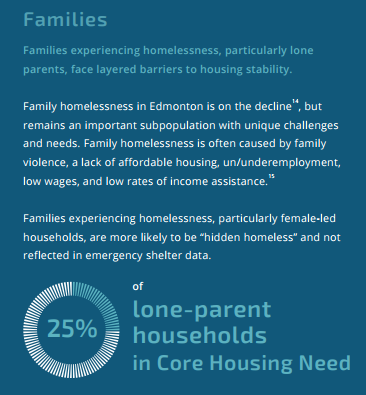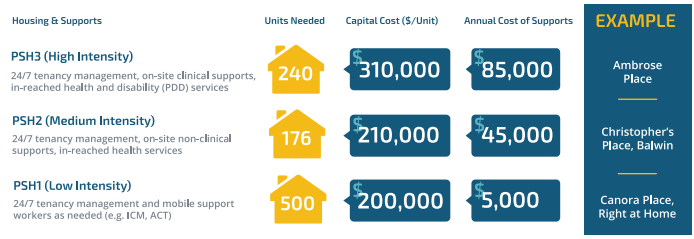Earlier this week, we reviewed the ten year plan to end homelessness that came out in 2009. The City of Edmonton and Homeward Trust noted the progress made in the last ten years in their Updated Ten Year Plan to End Homelessness, released on July 25 2017. Additionally, the plan addresses important topics moving forward in regards to ending homelessness. Some of the highlights are listed below:
More supportive housing needs to be developed
20 000 Edmontonians continue to live on low income, earning less than $20 000 annually. This population segment is spending 50% of their income on housing needs.
While 1000 supportive housing units were called for in 2009, only 200 of have been built. Supportive housing includes access to clinical and medical services. Another estimated 400 supportive housing units would be required to better serve our citizens.

Families need to be a higher priority for affordable housing
20 395 families are recorded to be living on low income wages in Edmonton. Previously, the plan to end homelessness focused efforts on individuals, with 1009 bachelor and one-bedroom affordable units built between 2009-2016. However, families are being under-served in terms of affordable housing options. It is estimated 25% of single-parent families are continuing to spend 50% of their household income on shelter. Currently, Right at Home Housing Society provides housing for 102 families, and is working on developing more family housing units. The 16 North Glenora townhomes that will be completed in September 2017 will contribute to affordable housing for families.
The Indigenous population experiences a higher risk of homelessness
The Updated Ten Year Plan to End Homelessness states:
About 23% of Indigenous Edmontonians are in Core Housing Need
(with First Nations Status individuals vastly overrepresented at 31.5%)
compared to 10% of all Edmontonians.11
Right at Home Housing Society recognizes the risk of homelessness posed to our Indigenous population. As a result, we hold a partnership with Niginan Housing Ventures that we are proud of at Ambrose Place. This housing model offers on-site support, as well as culturally sensitive practices that are inclusive towards our Indigenous population.
Long-term affordable housing models are the most cost-effective
Ambrose Place offers a much-needed model of supportive housing in our city. However, The Updated Plan to End Homelessness reviews the total budget costs for each housing model. The evidence shows that the more we can support our homeless population in becoming independent, and therefore, moving to permanent affordable housing, the less it will cost over the long-term. Right at Home Housing Society is listed as an example of effective affordable housing models. It is estimated an additional 500 affordable housing units should be built in Edmonton to help end homelessness.
